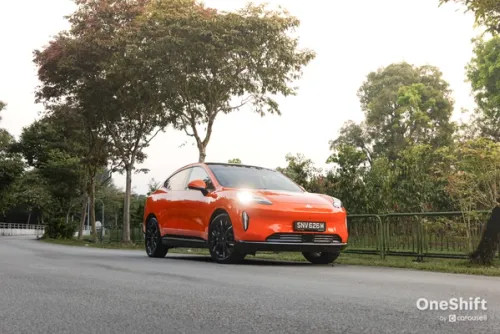Buying a Car... Where Does Our Money Go
We’ve long blamed COE for what must be seem as exorbitant prices to pay for a car in Singapore, even an average one toward which no one bats an eyelid. But what may surprise you, is that many people who buy cars here haven’t the foggiest idea what makes up the cost of a car apart from the wretched COE quota premium.

We’ve long blamed COE for what must be seem as exorbitant prices to pay for a car in Singapore, even an average one toward which no one bats an eyelid. But what may surprise you, is that many people who buy cars here haven’t the foggiest idea what makes up the cost of a car apart from the wretched COE quota premium.
So instead of doing the usual table of numbers which you can find on some websites, let’s try to take you on a little commentary of how a car comes to be sold at its retail price you see on the dealers’ pricelists.
It all begins with what many people are familiar with – the Open Market Value; or OMV for short.

In its simplest definition, it refers to the cost of the car a dealer pays to have it brought ashore here. But did you know that there are several components that determine the OMV even before this number is declared to Singapore Customs?
First, we have the base car cost, which is the price of the car set by the manufacturer before any options; the car in its barest form. Dealers then add on options, which are additional equipment and features you see on the car. It may surprise some to know that not everything on a car comes as standard; a good example would be LED headlamps. Many cars do in fact come with halogen lamps, but dealers specify LEDs as an option to add value to the car.
Each option comes at its own price; some could be as little as ten dollars, others thousands of dollars. So say we have a car that has a base price of $12,000, we add LED headlamps of $2,000 which takes the cost of the car to $14,000.
Manufacturers then charge a fee to transport the vehicle to port before it is shipped, perhaps $300. The car is then shipped, and the dealer bears the cost of freight and insurance. This could be another $500 or so, depending on the port of origin.
Now we have the final OMV, which is $14,800. Once the car is at port, an excise duty must be paid to remove the vehicle from port. This is at a flat rate of 20% of the OMV, which works out to be $2,960.

Once the car is sold to a customer and has to be registered for use on the road, LTA charges a registration fee which was recently raised to $220. The car also incurs an additional registration fee (ARF), which is at least 100% of the OMV. The going rate is 100% for OMVs up to $20,000, 140% of the remainder from $20,001 to $50,000, and 180% of the remainder from $50,001 and above. So it’s a progressive tax incurred as the cost of car goes up.
This now takes our car’s cost to $32,780. We then have the emissions tax or VES, for which some cars earn up to $20,000 in rebate or incur up to $20,000 penalty if their emissions are too high. Penalties are added on directly, whilst rebates are deducted from the car’s ARF, up to a minimum of $5,000 ARF payable. In this exercise, let’s assume the car does not incur any penalty or rebate.
We then need to remember that dealers have some variable costs to deal with; for example things like “free servicing”, solar films, car mats, dash cams etc. You didn’t really think freebies were free did you?
They do also need to pay your friendly sales rep for his or her service, however great or poor a job you may think said rep is doing, and possibly some local fittings like leather upholstery and multimedia units. These can add up to quite a fair bit, sometimes in excess of $10,000 believe it or not.
Arbitrarily, let’s call it $10,000, which brings the cost of car now to $42,780.

And we finally add the COE component into the mix, which takes our car up to $72,780, assuming a Category A COE with a quota premium of $30,000. Car dealers also usually pay the first year’s road tax for you, which is typically about $700 for a 1.5L car. Don’t forget, a GST of 7% also applies to the price of the car, excluding certain taxes like ARF and COE.
Now that you know the base cost of the car is in excess of $73,000, it shouldn't come as a surprise that cars like these are typically priced something like $79,999. This leaves the dealer a gross margin of only about $7,000, which is less than 10% of the selling price of the car. Bear in mind that this is a gross margin, which has to see dealers through their fixed costs and overheads which can cost hundreds of thousands a month in that swanky showroom you enjoyed visiting with its “free” coffee, snacks and video games for your kids.

So you see, while COE may be a major component that affects the price of the car, making up almost half the cost of an entry level car even, there are far more factors to the true cost of a car here. Perhaps you now begin to see the magnitude of the revenue the authorities receive with each car purchase, and focus less on COE premiums for a bit.
Credits:


Get the Best Price for your used car
from 500+ dealers in 24 hours

- Convenient and Hassle-Free
- Consumer Protection
Transparent Process
With No Obligation








